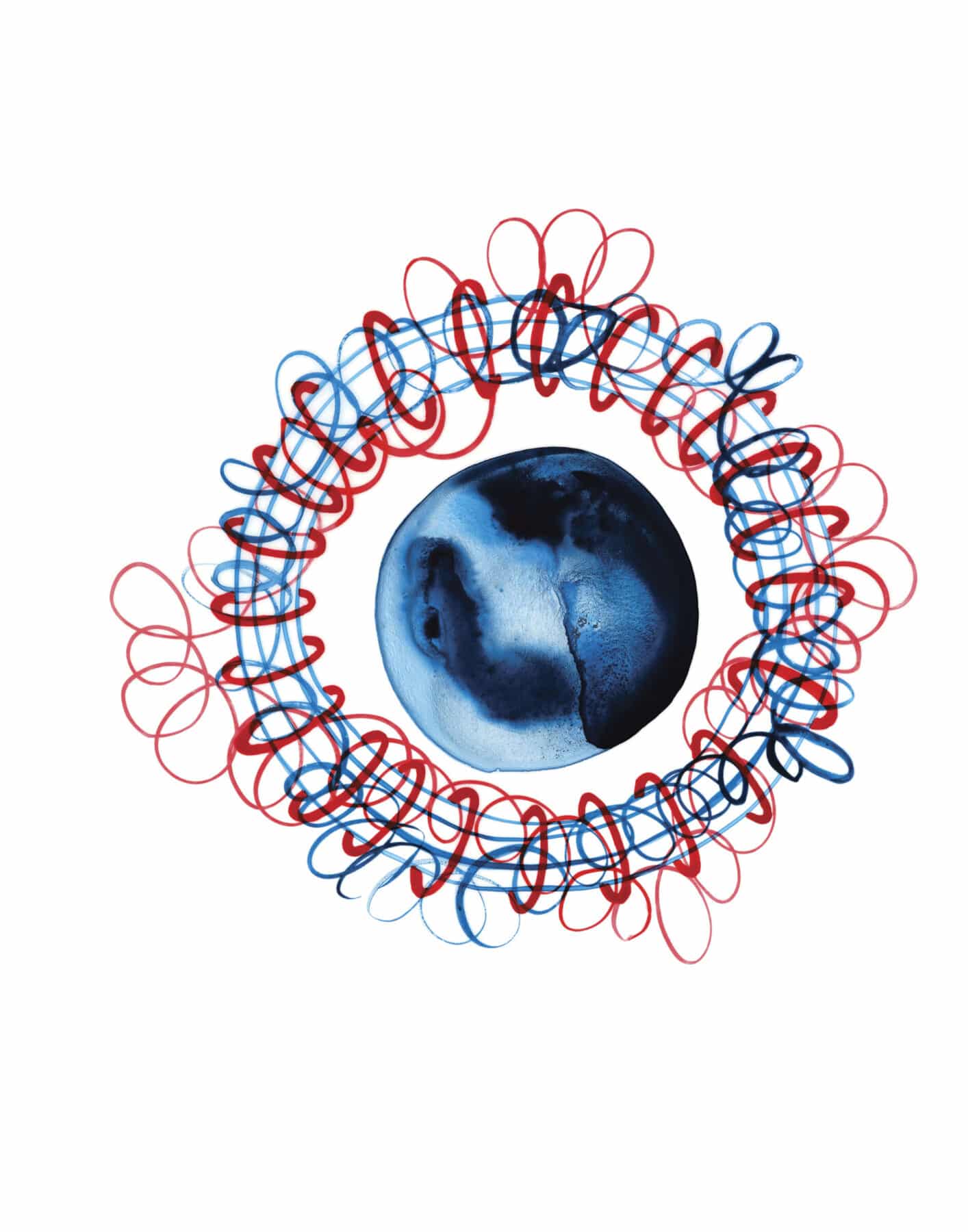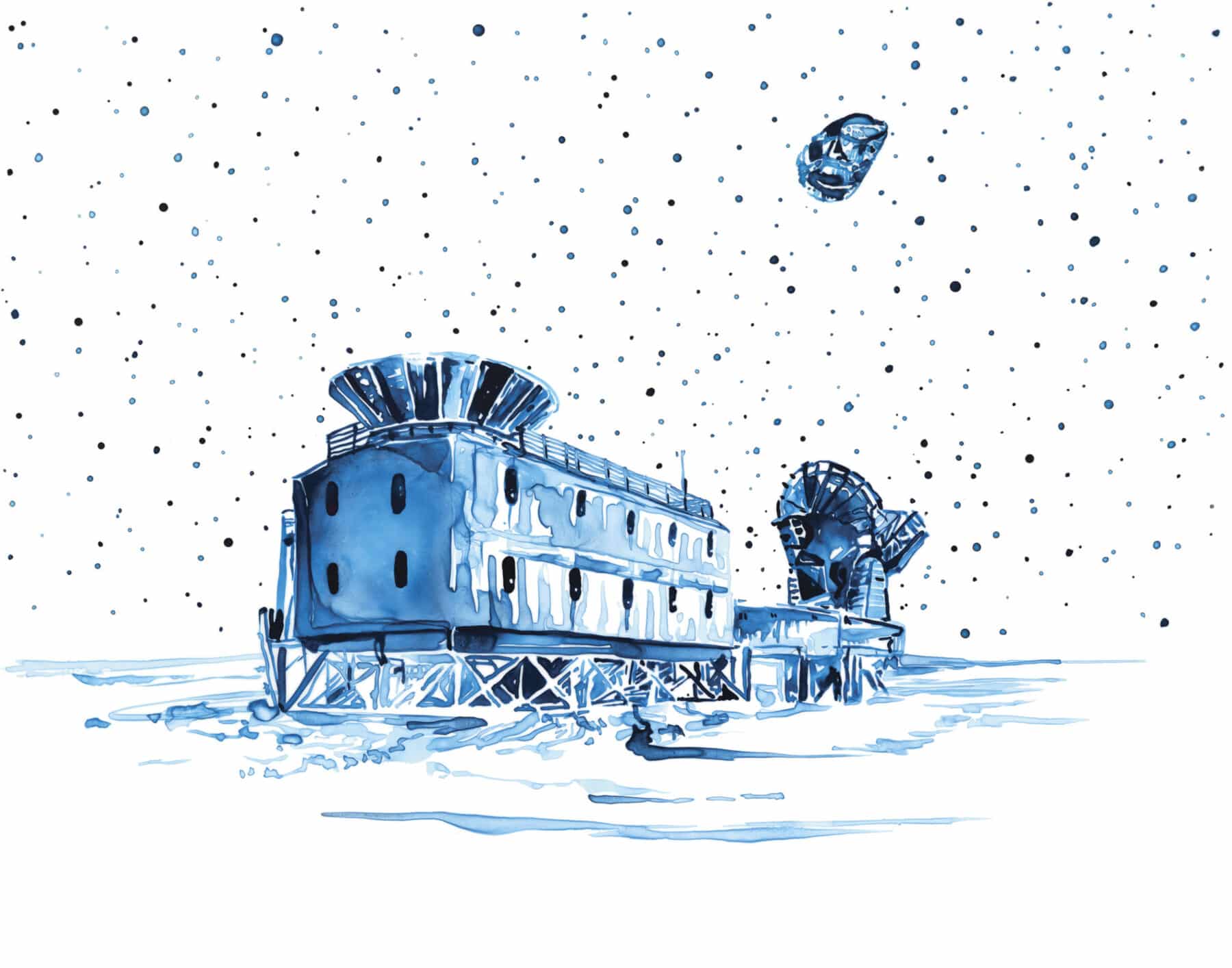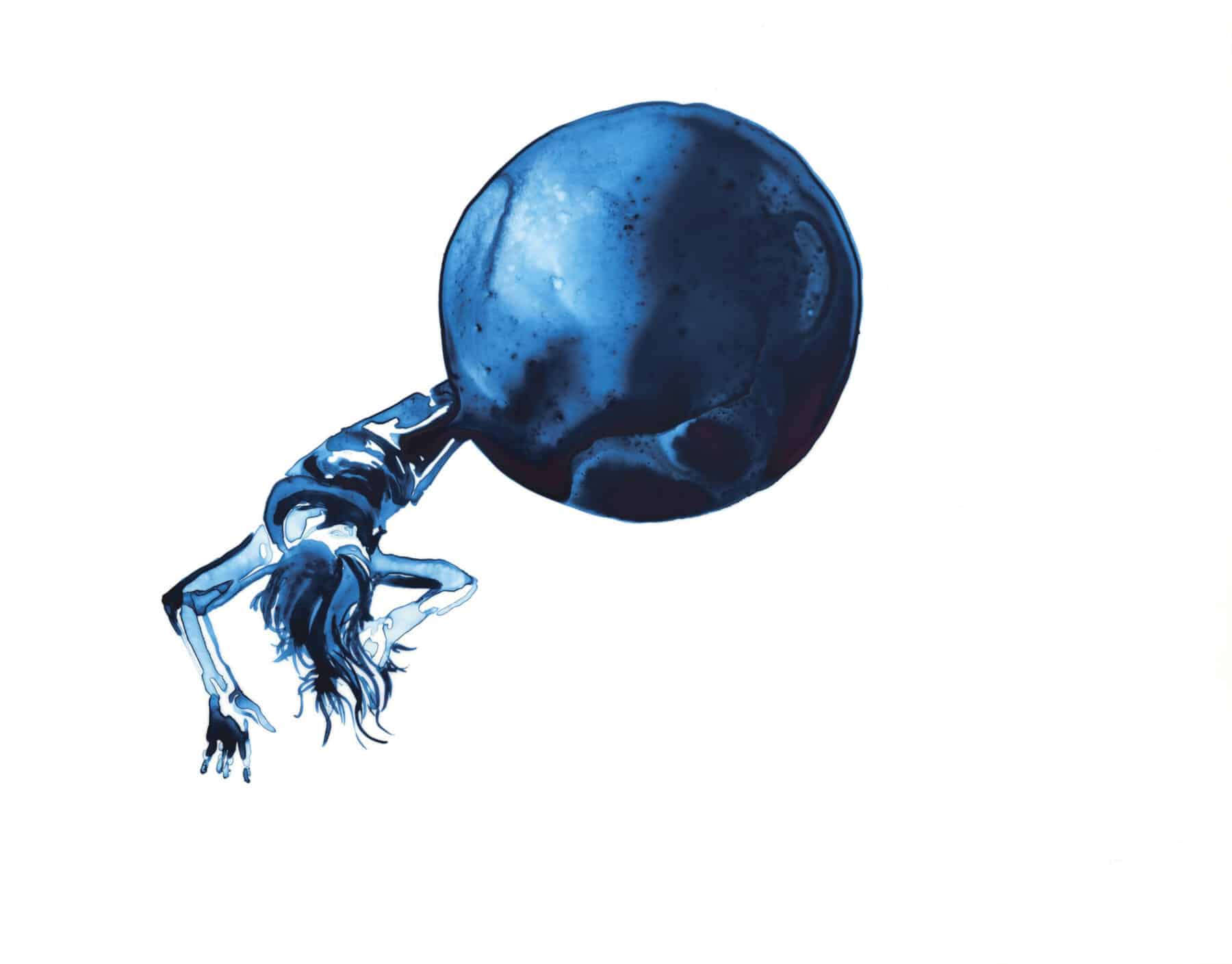Lia Halloran: Warped Side
Artist Lia Halloran and Nobel Prize–winning astrophysicist Kip Thorne intertwine science, art, and poetry to illuminate the extraordinary phenomena of warped space and time, including black holes, wormholes, and gravitational waves. Their work also tells the story of the physicists, their telescopes, and the observatories through which discoveries about our universe are made.

Over 13 years, Halloran created more than 650 paintings while collaborating with Thorne on their book, The Warped Side of Our Universe: An Odyssey through Black Holes, Wormholes, Time Travel, and Gravitational Waves (2023). This exhibition features a selection of 31 paintings published in the book alongside five new large-scale works that expand upon each chapter’s themes.
The series’ narrative is brought to life through people both famous and not, including Halloran’s wife, Felicia, as an intrepid space-time traveler navigating the forces of the universe, theoretical physicist Stephen Hawking, and Thorne himself. Their human presence makes abstract cosmic concepts more accessible, offering viewers a personal connection to the often overwhelming, enigmatic universe.

Halloran and Thorne’s collaboration began with prose and paintings that sparked dynamic conversations, leading to new artistic and scientific directions. For Halloran, the challenge lay in translating Thorne’s complex ideas about the unseen universe—concepts he conveyed to her through words and sketches—into simple, accessible paintings. For Thorne, the collaboration led to an unexpected transformation. Upon seeing his prose alongside Halloran’s paintings, he discovered its inherent poetic quality and transformed his scientific explanations into verse, making esoteric, complex cosmic phenomena more approachable and understandable. The result is an innovative approach to communicating the essence of complex science: an elegant synthesis of poetry and paintings.
Halloran is a professor and chair of the art department at Chapman University in Orange, California, and is represented by the gallery Luis De Jesus Los Angeles. She was born in Chicago and grew up surfing and skateboarding in Pacifica, California. Her practice often challenges the lack of representation of women and the queer community within the culture of science, astronomy, skateboarding, flying, and various other traditionally male-dominated fields. Her studio practice has taken various forms of art production, from painting, photography, and video installation. Her love for science began in high school when she worked at the Exploratorium in San Francisco, doing cow eye dissections and demonstrations on lasers and magnets for the public.
Thorne is a member of the National Academy of Sciences and the Feynman Professor of Theoretical Physics, emeritus, at Caltech in Pasadena, California. He is the author of the best-selling books Black Holes & Time Warps: Einstein’s Outrageous Legacy (1994) and The Science of Interstellar (2014). Born in Logan, Utah, he is known for his work in gravitational physics and astrophysics. In 1984, Thorne cofounded the LIGO (Laser Interferometer Gravitational-Wave Observatory) Project with Rainer Weiss and Ronald Drever. LIGO, managed by a younger generation of physicists, made the breakthrough discovery of gravitational waves arriving at Earth from the distant universe on September 14, 2015. Thorne shared the 2017 Nobel Prize in Physics with Weiss and former LIGO director Barry Barish. In 2009, Thorne began a gradual transition to a career at the intersection of science and the arts, including initiating, with Lynda Obst, a movie that became Christopher Nolan’s Interstellar (for which Thorne served as executive producer and science advisor).




